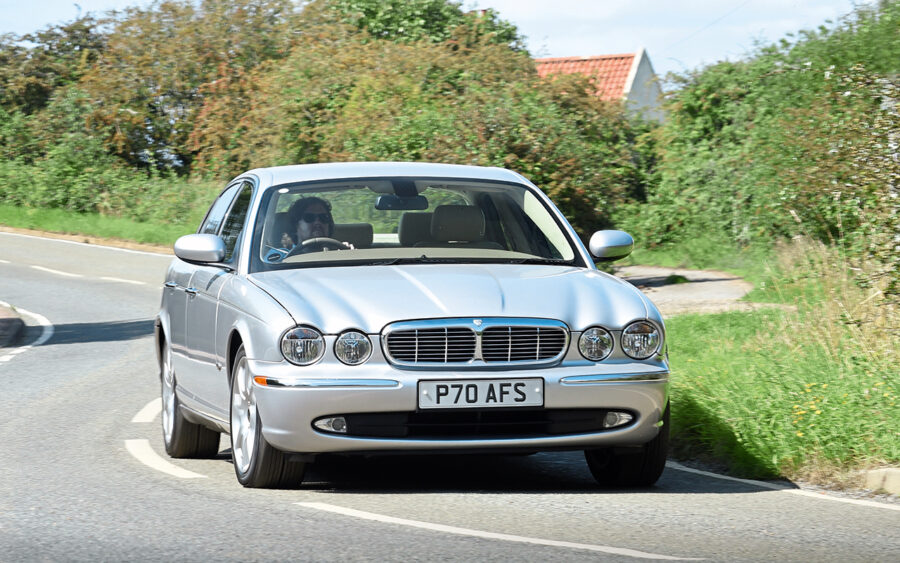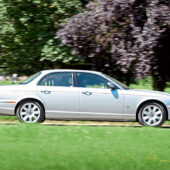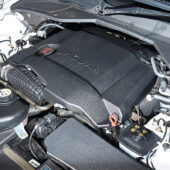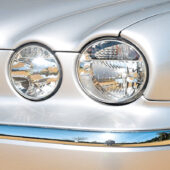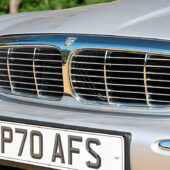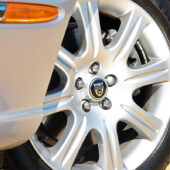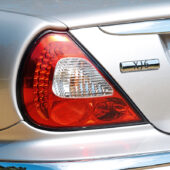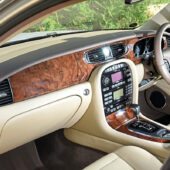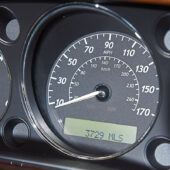This Jaguar XJ TDVi has done fewer miles in its whole life than many of us do in six months. We get behind the wheel
Words: Sam Skelton Images: Paul Walton
There are many people who go through life with a fixed dream in their heads. The sort of dream that, no matter what opportunities life throws their way, simply do not go away – these are the dreams that people realise, if ever they can. The Savile Row suit, the hand-made shoes, the Rolex watch – for some, it’s as simple as owning their own home one day, or being able to take an annual holiday. Forget Lottery wins and jet-set lifestyles, these are the everyman dreams that each and every one of us, if we’re honest, harbour.
And for many people, that dream had been Jaguar ownership. On a personal level, my late grandfather always wanted a Jaguar – but the closest he ever got was a brand new Rover 2300 – he had the money but could never justify such a frivolous purchase to himself. My father shared the dream, and at the age of 57 bought himself a seven-year old X-Type which became the first in a line of family Jaguars. For some, that dream has to go further – it had to be new, and it had to be an XJ.
But what if, upon achieving that dream, the rich tapestry of life conspires against you – forcing you into a position where the enjoyment of your life’s goal is curtailed almost before it has begun? And what if, in that position, the lucky dreamer chose to hang on to his hopes for as long as possible? While we would all agree that the circumstances involved are tragic in the extreme, it would make for a very special modern classic if such a car were to be found.
And that’s exactly the car we have for you on these pages – this XJ6 Executive TDVi has covered just 3700 miles in 17 years – an average of just 217 miles per year, or – at its quoted fuel efficiency – a full tank of fuel every 31 months. With ex-demonstrator models selling in period with higher mileages, this is as close as you will ever find to a brand new X350. What makes this even more unusual is the engine in this particular model: priced at £44,020 before any options, the XJ6 Executive TDVi was £1980 more expensive than the entry level 3.0 petrol.
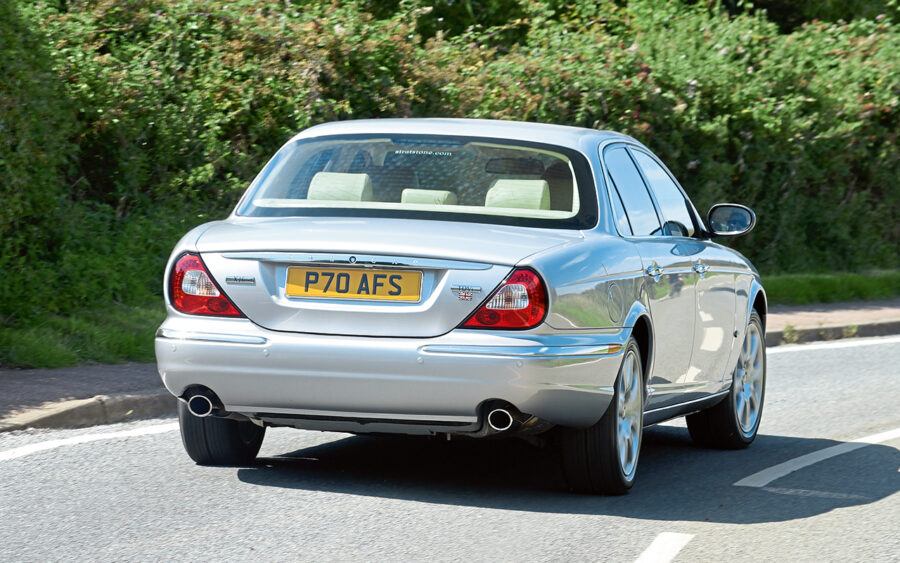
It was therefore a considered choice made for economy – which seems unusual given the limited use the car would later receive. By plumping for the diesel over the 3.0 the first owner – at 2006 prices – stood to save just £68 in fuel costs. In today’s prices, there’s still only about £80 in it.
The XJ TDVi was launched in 2005 as the culmination of a long programme of development to get a diesel into the XJ. Plans were afoot in the 1990s to trial BMW’s M57 diesel engine (seen also in the Vauxhall Omega) in the X300, but it wasn’t until the joint engine venture between Ford and PSA yielded the 2.7-litre twin turbo V6 that such a car was marketed to the public. The engine, termed AJD-V6, was one of four diesel engine families Ford and PSA agreed in 1998 to develop jointly, and was first offered in the S-Type 2.7D of 2004.
Just 3kg heavier than the petrol V6 it would supplant, it developed 204bhp and 325lb.ft of torque – more pulling power even than the V8 models could offer.
John Simister, writing for The Independent when the car was launched, pointed out that the X350’s aluminium construction meant that it was lighter and therefore faster than the smaller S-Type, and while its engine was the smallest in its class that low weight kept performance competitive and made the economy class-leading. In Autocar, Chris Harris made similar observations – noting that the 1659kg kerb weight of the Sport Premium on test compared well with the 1975kg of an equivalent BMW.
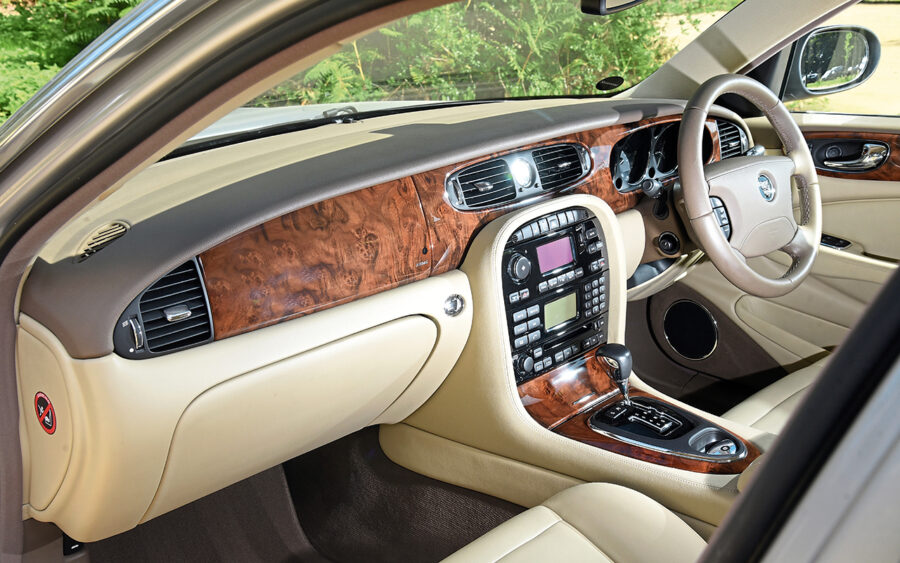
Both praised the car overall, with Simister finding that “I’ve never enjoyed a big, luxury saloon more on challenging roads.”
It is at this point that I must confess to a degree of personal bias. You see, I’ve never much cared for the X350 series. My first experience with one was test driving a 3.5SE for a friend of mine as I lived considerably closer to the car than he did. The throttle pedal jamming down on a dual carriageway left me uncertain, especially as the brakes couldn’t outstrip the engine and I was forced to drop it into neutral at 90mph approaching a roundabout to avoid being the subject of the local evening news.
After that, my efforts to reconcile with the model by taking on our own 4.2 Sport as a long termer were thwarted when, before even making it home it flagged up an air suspension warning and immediately needed expensive work. I’ve driven them since and – possibly as a result of my experience – I’ve found them somewhat anodyne, almost akin to a larger X-Type rather than an X308 successor.
But then, the faults I’ve found off-putting can be attributed to age and wear. If anything can convince me of the X350’s merit, it will be this – the closest thing to a brand new X350 anywhere outside Jaguar’s own collection.

The styling has never been an issue for me. It harks back to the Series XJs in a way I find appealing, and even the contentious cross-hatch grille puts me in mind of the Series II model. Detailing is subtle, and while personally I’d not have gone with Quartz Silver – I favour Ultraviolet Blue and Jaguar Racing Green – it looks excellent in the crisp light of a summer morning.
There’s nothing wrong with the Cream interior either; given that this car is resolutely from the monochrome era of interior design it’s nice to see one specced with leather warm enough to complement the wood. It smells right in here too – while most X350s have been subject to outside influences, air fresheners and the like over the years this smells like a new car, with the expensive scent of leather obvious from the moment you open the door. The seats feel good too, no real wear to the bolsters and even the steering wheel has that slight texture that often fades with age and use.
The TDVi is quiet too. Start it up and set off and there’s only a very subtle hint you aren’t in a V6 petrol. That’s the work of laminated glass with an acoustic layer, newly introduced to the X350 to coincide with the launch of the diesel. There’s also high quality sound insulation under the bonnet, and airtight seals between the engine bay and interior. The bulkhead is double skinned, and the engine mounts are a bit special. Not only are they damped with silicon fluid, but there’s an electrically controlled diaphragm inside the mount that expands and contracts the available space for the fluid to stiffen or soften the damping as necessary. The overall effect is to insulate the cabin completely from everything the TDVi is doing, and to make it feel as serene and calming as a traditional big petrol.
This is also the first X350 I’ve driven that, to my mind, behaves properly. The V8s and V6s in petrol form almost feel too eager, as if they’re trying to prove their sporting credentials in a world where all we want are comfortable luxury liners. This TDVi diesel has far less power than they do of course; at 204bhp it’s got less than my 26-year old Sovereign 3.2. But that car was 150kg heavier, and the power per tonne ratio of the newer car is actually very slightly better than my old steel dinosaur. And it feels faster than the older car but delivered in a similar manner – it isn’t about the standing start, rather it’s about the swell of torque as you accelerate and the unfussy nature with which it goes about its business.
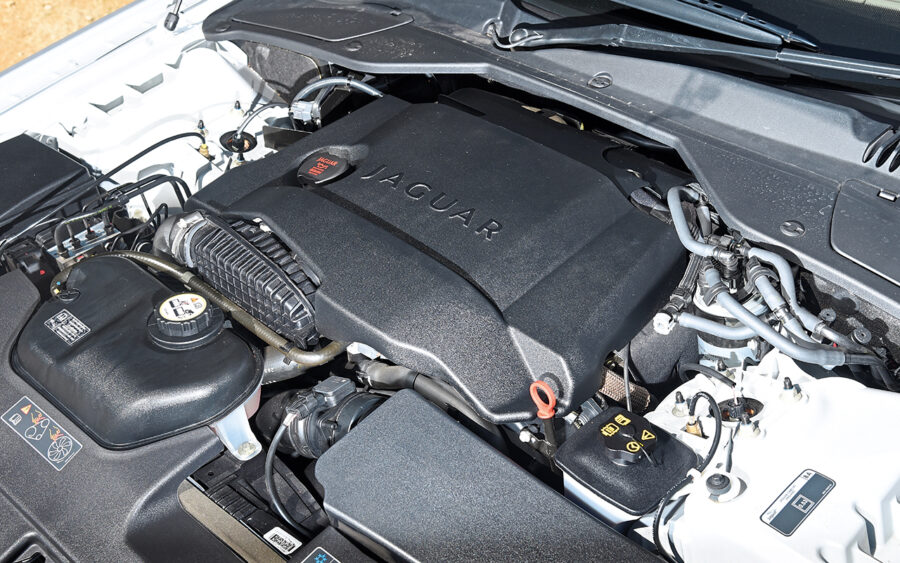
The six-speed gearbox has well chosen ratios too, and from behind the wheel this car doesn’t remotely feel like the poor relation that smaller-engined XJs have historically been.
In terms of its handling, the TDVi is the same as any other X350 – that’s to say composed, compliant and comfortable while retaining excellent turn-in and good grip. Period testers reported understeer in the dry when pushing hard and light oversteer in the wet, but realistically few will ever drive a car like this hard enough to realise either possibility.
It’s a long distance cruiser that pleases by retaining more steering feel than the Germans, a car that revels in long journeys where it can soak up the bumps without feeling compromised when you get it onto a B-road. And it’s absolutely won me over. I’m finding myself starting to like this car a lot – the TDVi feels much more special and much less compromised to me than the average X350 does, and it’s still new enough for a little bit of that “upmarket new car” sensation to have stuck with it.
All of which makes its story sadder. Because as we understand it, the first owner developed a longstanding illness which ultimately prevented him from enjoying this car much as he should – and as much as he had the right to, after parting with more than £40,000 for the privilege. Any enjoyment we’re getting from it now as an automotive time capsule is in effect the refraction of the enjoyment its first – and so far only – owner ought to have enjoyed.
And on top of that you have to ask yourself what exactly you would do with a car like this – do you keep it low mileage, unused, and deny yourself the undoubted pleasures it can offer? Or do you use it to the full and over time erode that low mileage and as-new atmosphere that make this such a special example, all the while devaluing your investment by making it into just another old Jag?
A car like this undoubtedly belongs in a collection. But we think that whoever ends up buying it should buy another, less special example too. Because the temptation to get out there and enjoy it is just too great unless there’s another more disposable example at your fingertips too.

